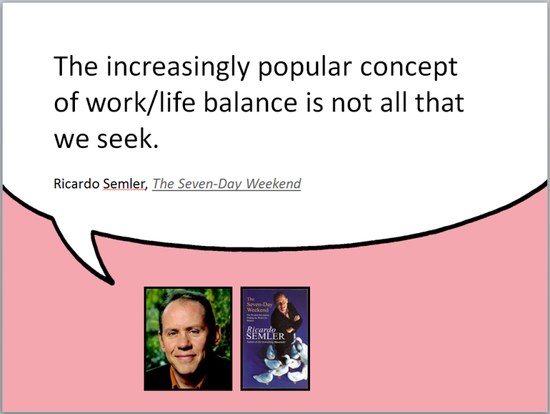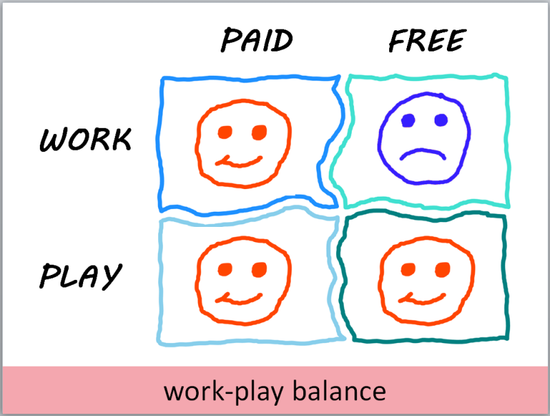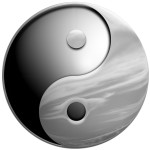Sometimes people ask me, “What do you mean with work-life fusion? How is that different…
Work-Life Integration and Work-Play Balance
I don’t aim for work-life balance. I aim for work-play balance, based on work-life integration.
The concept of work-life balance has gained a lot of popularity in the first decade of this century. The suggestion is that people need time to enjoy their "lifestyle and spiritual development", away from the stressful demands of their career. And many managers are urged to respect their employees’ need for having a life.
I see things differently.
Work-Life Integration
I answer all most of my emails with 24 hours, also in the weekends, because inbox zero helps me to have peace of mind. For the same reason I enjoy one-hour walks in cities and parks during regular weekdays, while other knowledge workers are PowerPointing each other to death in meetings. I usually take Skype calls or Hangouts in the evenings when others are watching TV, but I love relaxing with a book and a caffè latte in the afternoon, when “normal” business people are writing reports, marketing plans, or mission statements.
I can relax when I’m supposed to work, and I can work when I’m supposed to relax. It all depends on my mood, the context, and the vicinity of a decent coffee place. I love my work and I live to do what I love. Separating my work from my life is the last thing on earth that I want.
Ricardo Semler, the famous CEO of Semco, said the same thing in his book the Seven Day Weekend:
I firmly believe that people should strive to integrate work and life. Read a business report in your bed and bring your kids to the office. Get your spouse to review your new presentation and watch The Big Bang Theory with your colleagues during lunch. Cook dinner for your boss and feed office supplies to your dog.
Work-life conflict is Management 1.0,
work-life balance is Management 2.0,
work-life integration is Management 3.0.
I prefer not to balance my work and my life because I’m not dead when I work, thank-you-very-much.
Work-Play Balance
I prefer the term work-play balance. (Actually, I think work-relax balance is technically the better term, but work-play just sounds better.)
There are times I do work (at home or in an office) and there are times I relax (or play). Sometimes I get paid, sometimes I’m not. We could depict this with a simple 2×2 diagram with four quadrants, which will make many business consultants very happy:
- work/paid: I run courses, give presentations, sell licenses, and most of that I consider work. People usually pay me for that, which is kind of them.
- play/paid: Some activities I enjoy so much (conference talks, creative work) that I consider them play, not work. But I still get paid, which is awesome.
- play/free: Sadly, when I read a novel, take a walk, or watch Spartacus, nobody is paying me. But the activities are enjoyable enough to keep doing them.
- work/free: Finally, flight tickets, visa applications, hotel reservations, car maintenance, and doing the laundry, are work too. Yet, nobody pays me for that.
The last category is the one where I try to get rid of as many boring activities as possible, by delegating them to others, paying them for doing a better job than me, and hoping that they see pleasure in these activities where I don’t.
The boundaries between the four quadrants are not rigid. They are fluid, with activities moving back and forth, up and down, in and out. The only constant being that all four quadrants together form my life. The two balancing acts are work versus play and getting paid versus paying others.
Now I wonder, could the meaning of work be to move as much as possible down (play) and to the left (paid)?
 This idea is part of the presentation Blueprint for a Tribal Business. If you want me to tell you more about it at your next event, contact me.
This idea is part of the presentation Blueprint for a Tribal Business. If you want me to tell you more about it at your next event, contact me.









